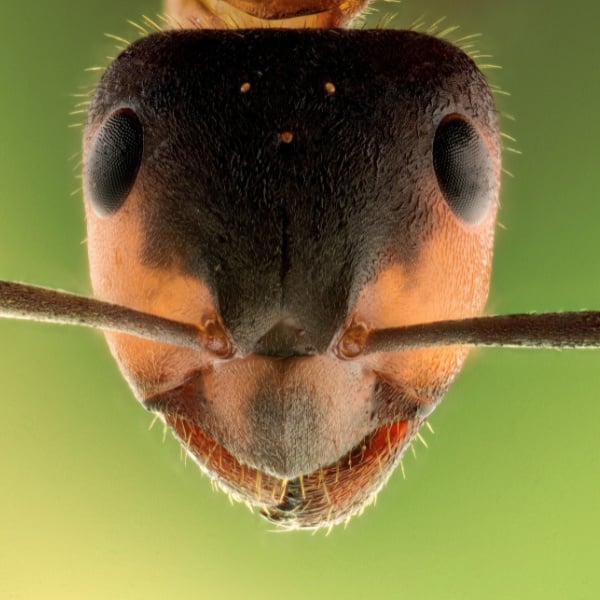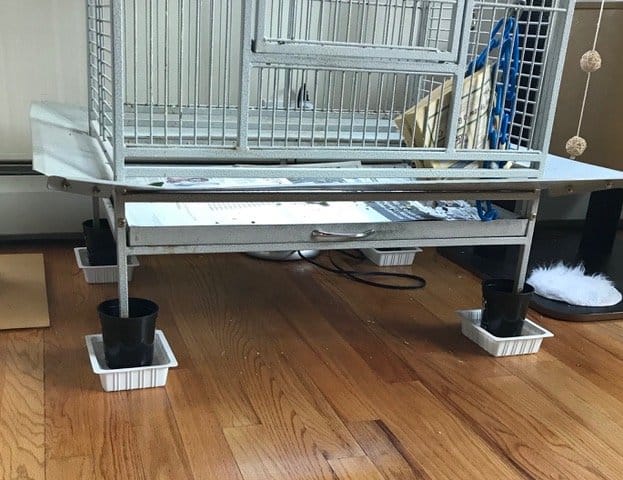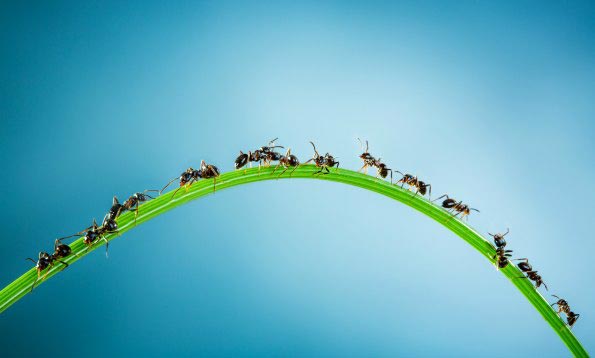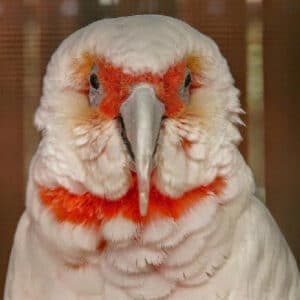
Egad, Ants Are in My Birds Cage & How the Heck Can Ants Be Good for a Bird?
Last Updated on by Mitch Rezman
Updated 4/2/19

We recently had a call from a woman who was frantic because she saw ants in her birdcage water dish. She wanted to know if she could put ant bait just outside of the dish on the cage – “NO!” was the short answer.
If you see ants in your bird’s cage the first thing you have to do is remove the bird and everything from the bottom of the cage, wash it and sanitize.
The ants did not start their journey from the inside of your bird’s cage.
Ants come from the outside of your home. The solution is to shut down the ant trails.

The 12,000 + species of ants with all they have to do between finding food and housing while making sure the rest of the group gets a part of the bounty makes them one of the hardest working insects in show business.
Their success relies on a high degree of cooperation and communication.
Amazingly the ants figured it all out long before social media.
They use chemicals that ooze out from all parts of their bodies to talk to other ants.
One chemical may indicate “Hey I’m out looking for food”, another one may point to where the food is and the third may even trigger an attack signal to the rest of the clan.
Ants, in general, will not hurt your pet birds with some exceptions like southern fire ants that will attack and kill nestlings.
They are most popular in the southwestern portion of the United States as is the Argentinian ant but they probably won’t hurt your bird.
Ants are not very tasty (so I’m told) and usually are not sought out as food by most parrots and even predatory birds but if you did have an interesting try.
Most ants reside out-of-doors waiting to make your next picnic miserable.
The ones that come inside are usually the scouts. Once they find food or water (like that pile of debris underneath your bird’s cage) they start oozing all sorts of chemicals which creates roadmaps for other ants in their clan.
If you find just one or two ants take that as a sign that these are the scouts and there are more to come.
A simple way to kill ants is to mix soapy water in a spray bottle and spray the invaders.
The soap helps the water cling to the ants which is useful because ants have breathing pores on the sides of the body.
The soapy water also will erase the roadmaps (trails) – this is why it’s so important to keep the area around your birdcage clean. (yeah right – I see you rolling your eyes)
In Tiny Game Hunting, (2001, University of California Press), a book was written about environmentally friendly ways to deal with insect pests around the home and garden.
Authors Hillary Dole Klein and Adrian M. Wenner Offer a great recipe for homemade bait.
“Dissolve a cup of sugar in 2 cups of boiling water.
Let the water cool, add a tablespoon of 100-percent boric acid, and mix the solution well.
Plastic film canisters, clearly marked as poison, make the perfect bait station.
Punch holes in the lid or the sides of the canister.
Stuff the canister with absorbent materials such as cotton balls or cut-up sponges, and fill the canister with the boric acid solution.
Set the station along the ant trail, spilling a drop or 2 to alert the passersby as to the sweet contents of the bait station. DO NOT place where your birds can get to these traps.
You must find the trail to erase the trail left by the “scouts” Simply wash the floor & walls and legs on your cage to remove the trails.
If you’re not into the Mother Earth persona, you can use conventional ant bait along walls where the ants are probably coming in as long as birds do not travel the same areas.
Powdered Boric Acid can be sprayed into floorboard cracks along the walls but it’s important to wipe off the residue.
Diatomaceous earth can also be used and is safer than boric acid. Do not use Diatomaceous earth sold for pools.
How bird’s use ants as medicine:
Upon smelling the perfume on a friend of ours I bought Catherine a bottle of Michael Kors (ladies you know what I’m talking about).
Humans enjoy applying liquids, gels, sprays, and all sorts of liquids over our bodies.
We do it so we smell better, look better become more attractive to other humans – the reasons are endless.
Believe it or not, this is done regularly in the animal world and it’s called self-anointing, anointing, or anting.
This is when animals will take secretions or body parts and sometimes even the entire body of another animal and smear it all over themselves.
Birds don’t have a lot of salivae but other animals may chew up the “bug” and use their saliva to slather up their own body parts.
Editors note: If birds had a lot of salivae, feathers would stick to their beks when preening
These insects have chemicals like formic acid which is a great insecticide, miticide, fungicide, or even a bacteriacide.
During the anting process the host can remove the nasty taste a bug may have and in the case of birds, insects can actually supplement a bird’s preening oil.
About 250 species of birds (there are approximately 10,000 species on the planet) have been known to ant. When birds anoint, their insect of choice is usually an ant and they will rub the little insect on their feathers and skin.
They may use their bill or beak to rub the entire bug along their body or do “ant angels” by lying on a pile of moving ants.
The ants act normally by releasing their medicated goo over the stationary bird’s body.
It’s believed that birds do this to counteract parasites like mites or to rid themselves of fungal infections.
Not a lot of research has been done to support these theories.
It’s also been noted that birds can select ants based on the chemicals they release. It has been shown that birds only use ants that have full acid sacs – How the birds know the acid sacs are full – is anyone’s guess.
Julie R started the conversation
Written by Mitch Rezman
approved by Catherine Tobsing
your zygodactyl footnote
Author Profile
Latest entries
 The Traveling BirdJune 26, 2025Can You Name 5 Parrot Species That Are Living Wild in the USA?
The Traveling BirdJune 26, 2025Can You Name 5 Parrot Species That Are Living Wild in the USA? Bird BehaviorJune 26, 2025How is it Parrots Are Problem Solvers Social Animals and Even Use Tools?
Bird BehaviorJune 26, 2025How is it Parrots Are Problem Solvers Social Animals and Even Use Tools? Bird & Parrot AnatomyJune 25, 2025How a Tiny Chemical Modification Makes Parrots Nature’s Living Paintings
Bird & Parrot AnatomyJune 25, 2025How a Tiny Chemical Modification Makes Parrots Nature’s Living Paintings PigeonsJune 20, 2025How Do Parrots Thrive in Cities Outside Their Native Habitats?
PigeonsJune 20, 2025How Do Parrots Thrive in Cities Outside Their Native Habitats?
This Post Has One Comment
Leave a Reply
You must be logged in to post a comment.



Cynthia
29 Apr 2018I saw a mouse one morning in my birdcage. The bird was unperturbed. Laid out mousetraps as the sonic deterrent across the room does not seem to be helping. I don’t let the bird out near the traps. Also added bait.